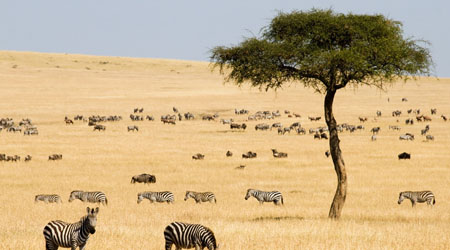Our
next topic in EM is global climates, so we started to look information about
them. I’ll describe them below.
Hot deserts:
According to Koppen’s classification of
climates, hot deserts are from group B, arid and semiarid climates. In deserts,
little precipitation occurs and living conditions are hostile for animal and
plant life. Due to this factor, only shrubs grow. This type of climate is found
in the Sahara, Saudi Arabia, large parts of Iran and Iraq, northwest India,
California, South Africa and Australia. They are generally hot, sunny and dry year-round and temperatures go from 50°C
during the day to below 0°C during the night.


Tundra: It belongs to the group E,
polar and alpine climates, in Koppen’s classification. It is the coldest of all
biomes. It has low temperatures; short growing seasons, little precipitations
and it soil is poor in nutrients. There is low biotic diversity. Tundra is
located in most of Greenland, parts of Alaska, northern Canada, and northern
Russia. We can find two types of tundra: arctic and alpine. The arctic tundra
is similar to deserts due to its cold conditions. The growing season ranges
from 50 and 60 days. The average winter temperature is -34°C and the average in
summer temperature is between 3-12°C. The alpine tundra is located where trees
can’t grow. The growing seasons for pants is of 180 days. Night temperatures
are below freezing. Plants from the alpine are tussocks grasses, dwarf trees,
small-leafed shrubs, and heaths. Animals present in this climate are mountain
goats, sheep, elk, beetles, grasshoppers and butterflies.


Cold: They are the coldest regions
on Earth. They are also cold “eternal ice”. They are from group E, polar and
alpine climates in Koppen’s classification. Temperatures are lower than 10°C
every month. Sun rises for long hours in summer and few hours in winter. Cold
climate consists in treeless tundra, glaciers, or a permanent or semi-permanent
layer of ice. It has cool summers and very cold winters. It is located in Antarctica, Greenland, Scandinavia,
Siberia, Canada, Alaska and South America. Some plants growing in cold climates
are: Bearberry, Dandelion and Iceland moss. Precipitation falls mostly as snow.


Equatorial: In Koppen’s classification they belong to group A:
tropical/megathermal climates. These regions usually experience 2000 mm of
rainfall or more in a year. They are located around the equator and cover wide
areas in South America, Central Africa and South-East Asia. The maximum temperatures
are about 32°C and minimum temperatures are about 23°C. Trees in these areas
are hardwood, durable and heavy, some
examples are Seraya and Ebony.


Savanna: It is a
wet/dry climate that belongs to group A tropical/megathermal
climates in Koppen’s classification. The savanna climate has a temperature
range of 20° - 30° C. In the winter, it is usually about 20° - 25° C. In the
summer the temperature ranges from 78° to 86° F (25° - 30° C). There is
an annual precipitation of 10 to 30 inches of rain. From December to February it doesn’t rain. Savanna’s animals include giraffes, zebras, buffaloes, kangaroos,
mice, moles, gophers, ground squirrels, snakes, worms, termites, beetles,
lions, leopards, hyenas, and elephants.


Monsoon: According to Kopper’s classification monsoon climate belongs to Group
A: Tropical/megathermal climates. The
annual temperature is 27°C. It’s found in
South and Central America. However, there are sections of South Asia, Southeast
Asia, Africa (particularly West and Central Africa), the Caribbean, and North
America that also feature this climate. Unlike tropical savanna climates
however, a tropical monsoon climate's driest month sees less than 60 mm of precipitation.








